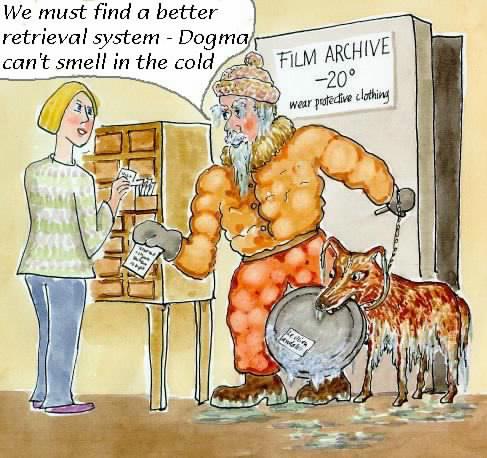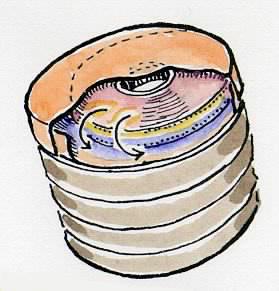
 |
The Hunt Ball - 4 |
The high risk behaviour of enclosures in a temperature gradient presents unexpected dangers in conservation.
One unavoidable cause of a powerful transient temperature gradient is the removal of a film from the deep freeze archive which has become the normal environment for preserving this art form.

Most conservators are aware that the film must be kept away from the room air while it warms up, because of the condensation that would otherwise form on the outside of the container, and threaten to creep in to damage the contents. There is however a more subtle threat of internal condensation, where water vapour migrates from a warming part of the package to the still cold interior. The process is shown in figure 6.
A good old fashioned Hollywood five reeler will hold a cold core temperature long after the happy ending has warmed up. Let us suppose that the warm end is at 5°C and that the film has a water content corresponding to 50% RH. The dew point of the air at the surface of the film roll will be about minus 5°C. If this water vapour has a chance to diffuse to a part of the parcel that is colder than this, ice will form there. As the packet continues to warm, the ice will melt and wet the immediately adjacent film.

It is therefore important to enclose the warming package in an airtight container that is also thermally insulating. There should never be more than about 7 degrees temperature difference between the hottest and the coldest part of the assembly. This is yet another illustration that the key to humidity control is temperature control. One could add that the film should be equilibrated to the lowest acceptable RH before enclosure and committment to the cold store.

This work is licensed under a Creative Commons Attribution-Noncommercial-No Derivative Works 3.0 License.